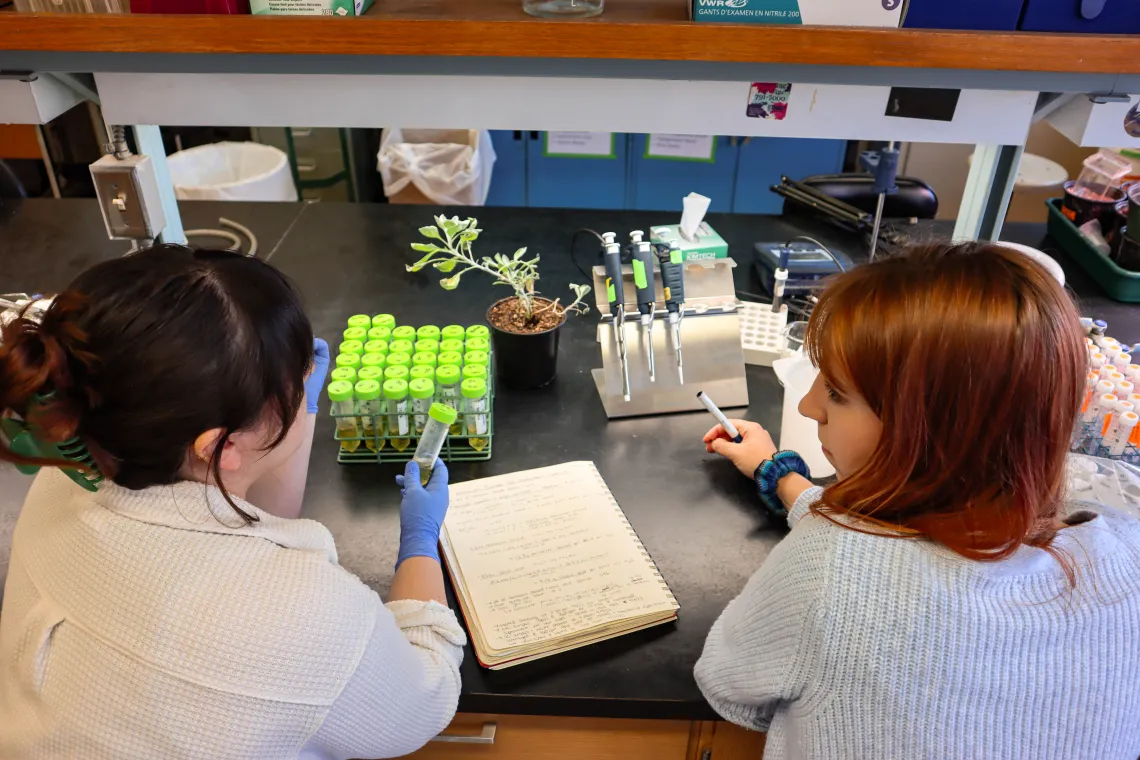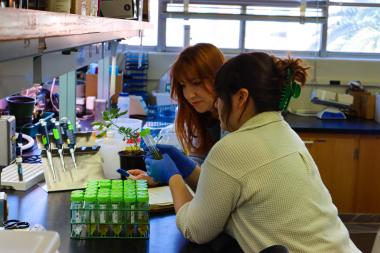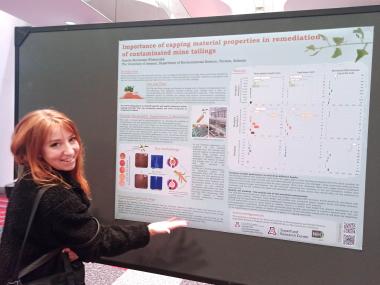A Student's Perspective: A Promising Step Towards Sustainable Mining Practices
ENVS graduate students, Jessica Ledesma and Kamila Murawska-Wlodarczyk, share their research experience.

We are thrilled to share our project investigating revegetation technologies for mine reclamation! Our names are Jessica Ledesma(link is external) and Kamila Murawska-Wlodarczyk(link is external), and we are both graduate students in the Environmental Science department and involved in the Center for Environmentally Sustainable Mining (CESM).(link is external)

One of the major challenges that CESM is tackling head-on is the issue of waste disposal in mining operations, which has a significant impact on nearby ecosystems and biodiversity. Our project is one of several in CESM that focus on revegetation to cover mine tailings and restoration of degraded lands.
We are aiming to solve these issues with reclamation technologies to control dust emissions and promote vegetation establishment and ecosystem health.
The cap and plant strategy
The cap and plant strategy is a standard remediation practice for legacy tailings, which involves capping contaminated mine tailings with non-contaminated soil material and then planting vegetation to help immobilize pollutants in the soil.
This eco-friendly and cost-effective technology, also known as phytoremediation, uses the power of plants to extract, break down, or confine contaminants from soil, water, or air.
Over the past two years we have been working to identify the key biophysicochemical properties necessary for successful vegetation growth in capping materials sourced from natural locations and mine stockpiles.
Our team sampled three different locations in Southwestern Arizona to assess variability in soil properties — with two locations representing natural soil deposits from roadcuts and one representing soil borrow pits in Arizona copper mines.
Jessica on her topsoil stockpile soil characterization research
My research focuses on characterizing and analyzing the topsoil that would potentially be used as capping material to revegetate areas affected by mine waste deposition. This full characterization involved prepping the samples and sending them out for analyses by several commercial laboratories for general soil properties such as soil nutrient composition, soil texture, and pH.
I also worked extensively to investigate the soil DNA biomass through DNA extractions and the mineralogy of these samples through quantitative x-ray diffraction and selective dissolution experiments. I have been working to statistically analyze these data to understand the contributing variables that differentiate the soil samples from one another with depth. This characterization will aid in the rhizobox experiments done by Kamila to understand germination patterns.
This project allowed me to explore soil science through a new lens. I have previously worked on analyzing soil nutrients like phosphorus and soil microbial communities in other projects, so it was very exciting to incorporate mineralogical analyses into this project to get a full picture of the soil material and understand how the physicochemical properties influence variability and change throughout the soil cores.
This project has really exposed me to different revegetation and reclamation technologies used in mining, especially here in the Southwest.
Kamila on her rhizobox study to assess the effectiveness of capping material on plant performance

I was responsible for controlled conditions experiments involving plant germination, establishment, and development. Altogether, I tested 29 capping materials collected from three different locations, each representing different depths, to assess their capacity to support plant growth.
This project was truly a great challenge and exciting journey for me. I set up almost 700 rhizoboxes that allowed me to explore the effect of capping material on plant growth and root system development.
It was amazing to observe how plants behaved differently in each soil material, influenced by the site location and depth from which the material was collected.
By exploring the unusual abilities of plants and their associated microbiome, we are working towards a more sustainable approach to mining that benefits both the environment and the communities affected by mining operations.
As a result of our extensive study, we are discovering the intricate complexity of the system and the interdependent relationships between the soil microbiome, soil properties, and plants. The findings of this research provide a deeper understanding of the various factors that contribute to successful revegetation on mining sites. The researchers hope that their study will lead to more site-tailored solutions for the mining industry.
Collaborating to share our research
We are wrapping up our individual parts of the project, and we are very excited to merge our data to get a full picture of the factors that may influence successful revegetation.
We recently presented our research findings at international conferences (e.g., SSSA, SME), sparking great interest among researchers and the mining industry representatives. This was a great opportunity to work with different stakeholders as students and provide our perspective on advancing sustainable practices in the mining industry.
This project is realized in collaboration with the University of Arizona Superfund Research Program.(link is external)
If you are passionate about environmental sustainability and curious about the innovative research being conducted by CESM, join us in our mission to create a more sustainable and eco-friendly future for the mining industry!
